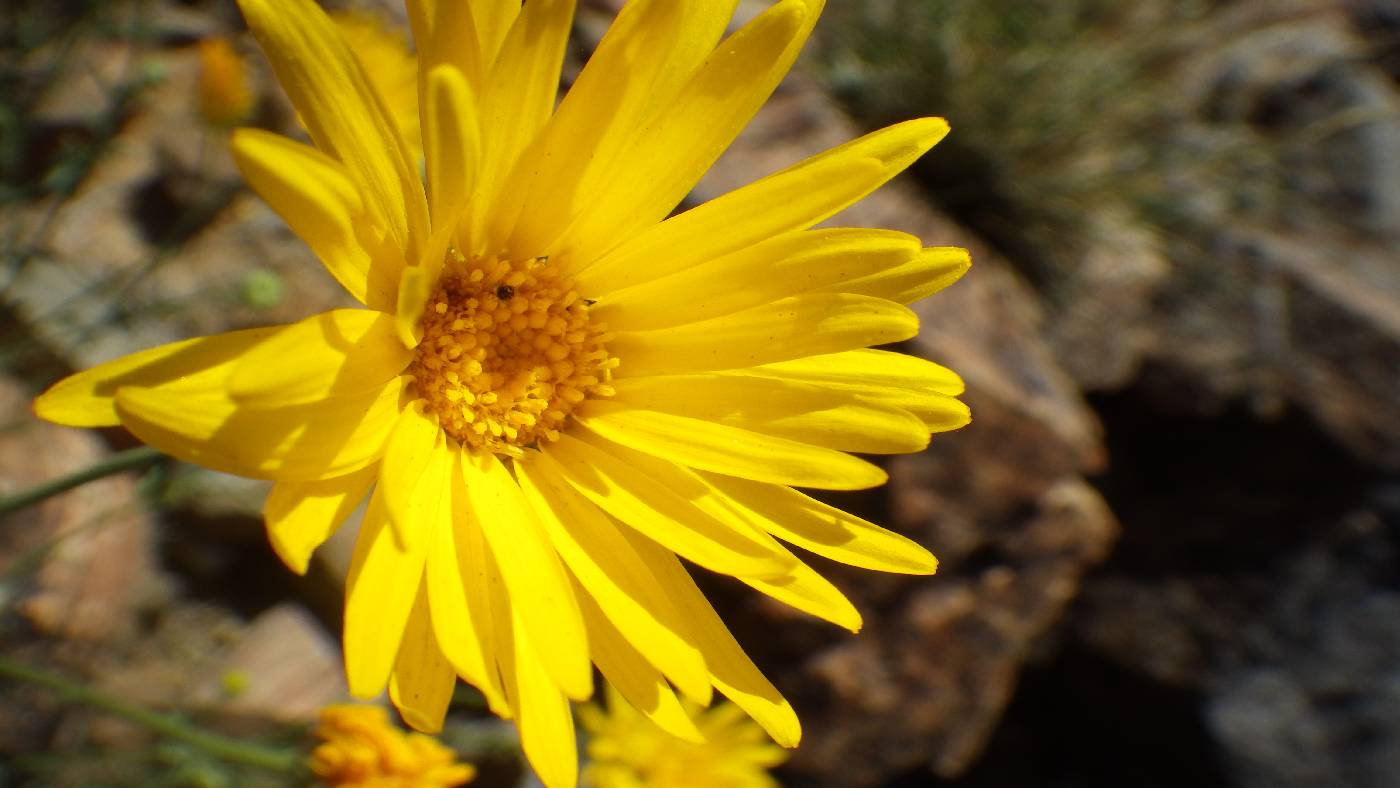
|
Family: Asteraceae |
Annuals, biennials, perennials, or subshrubs, 3-100 cm (taprooted, caudices woody, much branched [rhizomes]). Stems erect, spreading, or sprawling, often much branched, glabrous or hispid to hispidulous, villous, or stipitate-glandular (especially distally). Leaves: basal (sometimes persistent) and cauline; short-petiolate or sessile; blades 1-nerved, lanceolate to oblanceolate or spatulate (bases tapering to clasping), margins entire, serrate, dentate, pinnatifid, or 2-pinnatifid (apices of blades, lobes, and teeth apiculate to bristle-tipped, bristles 1-4 mm), faces usually glabrous, hispid, hispidulous, or villous, sometimes also stipitate-glandular. Heads radiate or discoid, borne singly or in corymbiform arrays. Involucres turbinate, campanulate, or hemispheric, (4-10 ×) 6-25 mm. Phyllaries 26-80+ in 2-8 series, appressed, spreading, or reflexed, 1-nerved (flat to rounded), linear to narrowly oblong or lanceolate, or enlarged distally into ovate to orbiculate or depressed-elliptic laminae, unequal, stiff, leathery, bases indurate, margins sometimes scarious, (apices herbaceous or achlorophyllous) faces hispid to hispidulous, villous, and/or stipitate-glandular. Receptacles flat to convex, pitted (pit borders usually laciniate or irregularly bristly, the teeth or setae 0.1-2+ mm), epaleate. Ray florets 0 (in X. grindelioides and 2 Mexican taxa) or 12-60+, pistillate, fertile; corollas white, pink, red-purple, purple, or yellow. Disc florets 15-200+, bisexual, fertile; corollas yellow, tubes length 1 / 4 - 1 / 3 ± funnelform throats (usually glabrous), lobes 5, spreading, triangular (glabrous or sparsely puberulent, hairs fine, antrorse); style-branch appendages lanceolate. Cypselae distinctly dimorphic (tan to red-brown or purple), ellipsoid to obovoid, oblong, or obscurely cordate, those of rays (if present) ± 3-sided, rounded abaxially, of disc compressed (thin or thick walled), 6-18-ribbed, faces silky (hairs antrorsely ascending to appressed); pappi persistent, of 30-90+ usually whitish to brown or reddish brown, basally flattened (wider at overlapping bases), coarsely barbellate, apically attenuate bristles in 2-4 series. x = (2, 3, 4) 5. As here circumscribed, Xanthisma includes four sections of Machaeranthera in the sense of R. L. Hartman 1990: Blepharodon, Sideranthus, Havardii, and Stenoloba. The last section, consisting of a single Mexican species, is treated here as a synonym of sect. Sideranthus. This grouping is well supported by molecular data (D. R. Morgan 1993, 1997, 2003; Morgan and Hartman 2003; Morgan and B. B. Simpson 1992). Although Xanthisma includes species with both cyanic (blue, purple, pink, or white) and yellow rays, several morphologic characteristics are shared by its members, including short, turbinate, thick-walled fruits that are moderately to densely silky, receptacular scales, leaves with marginal spines, and chromosome numbers based on x = 4 or 5, with a descending dysploid series in one taxon. Many of these species have, in fact, been grouped together at the generic or sectional level by earlier authors such as E. L. Greene (1894b), H. M. Hall (1928), L. H. Shinners (1950b), A. Cronquist and D. D. Keck (1957), J. C. Semple (1974), and Hartman (1976, 1990). The following key is based largely on data from Hartman (1976, 1990) and Semple.
|
This project was made possible in part by the Institute of Museum and Library Services [MG-70-19-0057-19].
Powered by Symbiota



